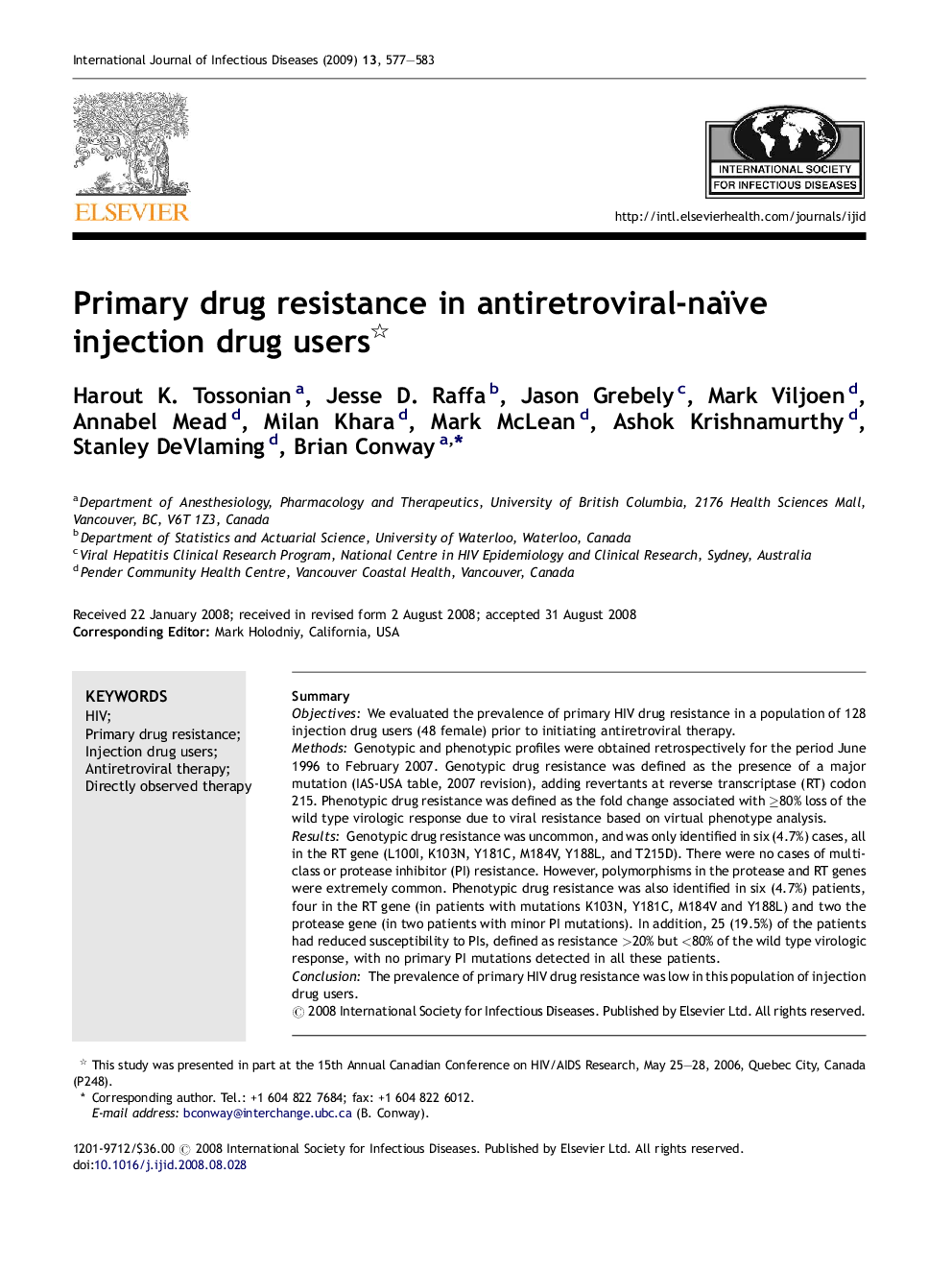| Article ID | Journal | Published Year | Pages | File Type |
|---|---|---|---|---|
| 3364404 | International Journal of Infectious Diseases | 2009 | 7 Pages |
SummaryObjectivesWe evaluated the prevalence of primary HIV drug resistance in a population of 128 injection drug users (48 female) prior to initiating antiretroviral therapy.MethodsGenotypic and phenotypic profiles were obtained retrospectively for the period June 1996 to February 2007. Genotypic drug resistance was defined as the presence of a major mutation (IAS-USA table, 2007 revision), adding revertants at reverse transcriptase (RT) codon 215. Phenotypic drug resistance was defined as the fold change associated with ≥80% loss of the wild type virologic response due to viral resistance based on virtual phenotype analysis.ResultsGenotypic drug resistance was uncommon, and was only identified in six (4.7%) cases, all in the RT gene (L100I, K103N, Y181C, M184V, Y188L, and T215D). There were no cases of multi-class or protease inhibitor (PI) resistance. However, polymorphisms in the protease and RT genes were extremely common. Phenotypic drug resistance was also identified in six (4.7%) patients, four in the RT gene (in patients with mutations K103N, Y181C, M184V and Y188L) and two the protease gene (in two patients with minor PI mutations). In addition, 25 (19.5%) of the patients had reduced susceptibility to PIs, defined as resistance >20% but <80% of the wild type virologic response, with no primary PI mutations detected in all these patients.ConclusionThe prevalence of primary HIV drug resistance was low in this population of injection drug users.
